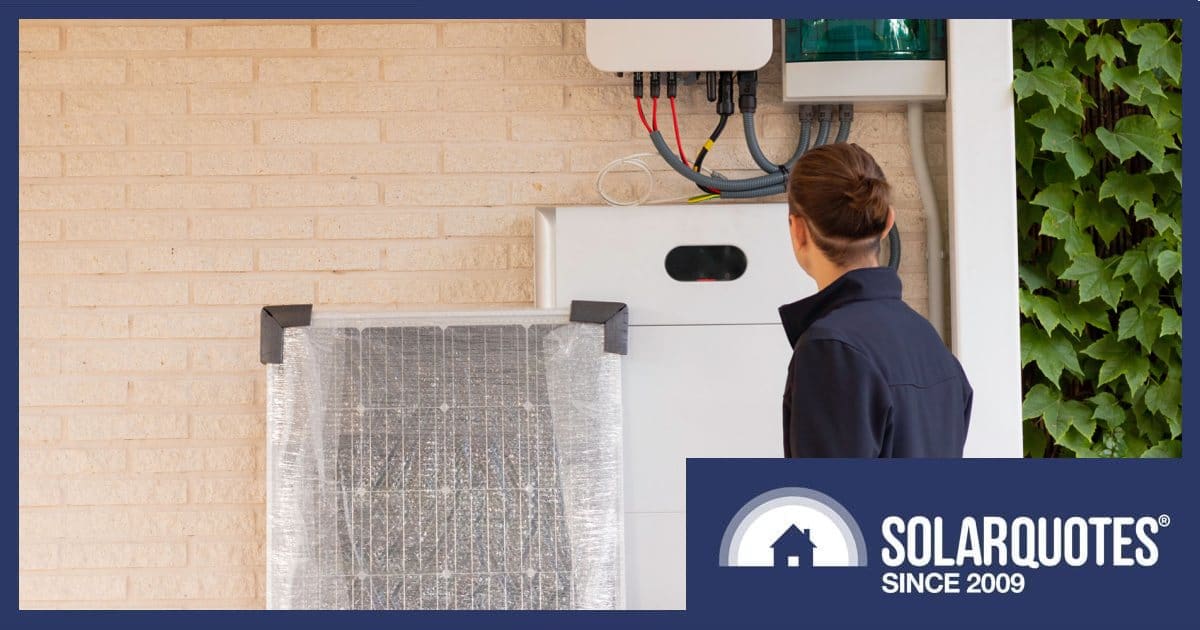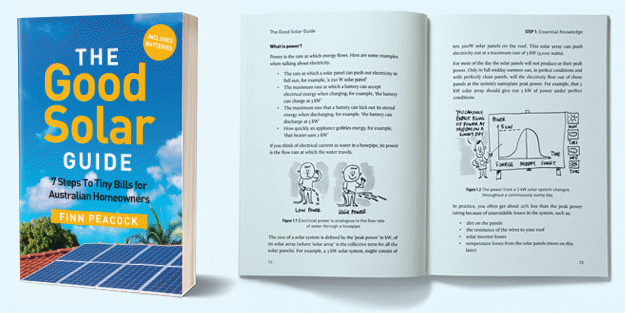
Now the dust has settled after Western Australia’s state election, a little more detail has provided about the Cook Government’s upcoming WA Residential Battery Scheme.
Among WA Labor’s pledges in the lead-up to the state election was a $387 million program to provide non-means-tested home battery rebates of up to $5,000 for Synergy customers and up to $7,500 for Horizon Power customers, along with a means-tested no-interest loan option. The rebate will be available for residential properties in Western Australia, including home business customers.
On Wednesday afternoon, further details were published by the WA Department of Energy, Mines, Industry Regulation and Safety; but there will be more guidelines to come.
The scheme is to be rolled out in several rounds, with the first commencing on or before 1 July 2025. It will be administered by a yet un-named third-party service provider with a track record of delivery of similar schemes.
The rebate for Synergy customers will be $500 per kilowatt- hour and $750 per kilowatt-hour for Horizon Power customers for up to 10 kWh of battery capacity.
Battery System Eligibility
At this point the only eligibility requirements are:
- New, additional and replacement home battery systems with minimum 5kWh storage capacity.
- Virtual Power Plant (VPP) readiness.
Additional minimum standards and system warranty provisions will apply, which are to be developed in consultation with industry.
No-Interest Loans Can Incorporate Solar Panels
New, additional and replacement solar panels will also be eligible for no-interest loans in situations where installation is occurring as part of a solar + storage package purchase. Loan eligibility will be limited to households below a specified income threshold, with both minimum solar system size and income threshold yet to be determined.
The minimum loan amount will be $2,000 and the maximum, $10,000; which Premier Cook previously said can be repaid over 10 years.
For Installers And Retailers
Accreditation and compliance arrangements are still to be fleshed out and will be developed in consultation with industry, but here’s what we know so far – which isn’t much.
First, retailers and installers wanting to participate in the scheme must have a business address in Western Australia. And whatever financial, integrity, technical and safety standards are settled on must be continuously met, along with a demonstrated capacity to deliver. Participating businesses will be subject to compliance audit testing.
One of the concerns about such generous incentives is it can jack up the prices of solar gear. Under this program, previous pricing is to be published before each round of rebates for full disclosure; but the finer details of how that will work is also yet to be developed.
The WA Residential Battery Scheme is expected to benefit up to 19,000 Synergy and up to 1,000 Horizon customers. Installers will no doubt be very busy when it kicks in, but between now and then it could be slim pickings for them – an issue that has already been raised with the Cook Government.
If you’re considering adding solar power and/or battery storage to your home in Western Australia, should you hold off? What if you’re in another state and waiting to see what Labor and the Coalition may offer as federal election sweeteners? And on a related note, might there be an opportunity for WA households to double-dip?
SolarQuotes Founder Finn Peacock recently explained why waiting for rebates could cost you more, but how some households may be able have their cake and eat it too. Whatever you decide to do, learn everything you need to know about home batteries before signing on any dotted line. And to stay up-to-date with what’s happening, subscribe to the SolarQuotes weekly newsletter.

 RSS - Posts
RSS - Posts



If we had home solar batteries before they started massive expense on large batteries it would have been cheaper in the long run and better
What about the people who are already off grid
Looks like I just missed out on this rebate. I wonder if Roger would consider applying it retrospectively to cover the past 12 months or so.
I’ve been patiently waiting for this, stoked it’s finally happening here in WA!
“The rebate for Synergy customers will be $500 per kilowatt- hour and $750 per kilowatt-hour for Horizon Power customers for up to 10 kWh of battery capacity.”
So, the Crook government is showing WA to be poorer than the Northern Territory, which has had, as shown at
https://dme.nt.gov.au/news/2024/home-and-business-battery-scheme-update ,
”
Home and Business Battery Scheme update
Published 26 November 2024
The Territory Government is increasing the Home and Business Battery Scheme (HBBS) bonus from $5,000 to $12,000 from 1 December 2024.
The scheme will help lower energy bills for Territorians and provide a boost for local businesses benefitting from the supply and installation of solar PV systems and batteries.
Batteries can be used to store excess midday solar energy for release later in the day when demand is higher, reducing pressure on existing power lines and generators.
Home and business customers who add batteries to a PV system, can match the battery release time to the hours when they consume the most power at their property.
The scheme provides eligible homeowners and businesses with access of up to $12,000 for a battery subsidy of $400 per kilowatt hour of useable system capacity.
Grants enable owners to either, buy and install:
a solar photovoltaic (PV) system with an eligible battery or inverter, or
an eligible battery and inverter, to complement an existing solar PV system.
Batteries enable households and businesses to maximise use of electricity generated from rooftop solar PV systems while contributing to grid stability and reducing power system costs.
”
So, the Northern Territory CLP government has more money, and, is ahead of Western Australia, including being more technologically advanced, with a greater understanding of electricity grid management, than the WA Crook government.
NT also has a much lower population and density, which means the grid is probably more expensive per capita to maintain. So it makes sense they subsidise batteries more to smooth out energy demand.
And do they, in the Northern Territory, get electricity grid blackouts when the weather gets hot, and when light rain falls (0-2mm)?
If they maintain their grid, that is also another bonus that they have over us.
We have a relatively new (a couple of years old) wooden power pole on the verge in front of our house, with cracks in it, 8-10 feet long, that are a couple of inches wide, and a few inches deep. Photographs sent to Western Power. “She’ll be right, mate”…
And, for any damage done to any domestic appliances by the unreliable, unstable, and unsafe electricity grid supply, “Tough bikkies, mate – we are immune from any liability for any damage caused by our negligence”.
Safest to leave all appliances, including fridges, freezers, air conditioners, etc, disconnected fro the grid electricity supply.
This is the Shonky Westralian Inadequate Stuff-up Grid…
Hi Bret,
You might want to look up the national electricity rules administered by the AER. Reliability is supposed to be 99.998% and the DNSPs can be held to account if they don’t meet it.